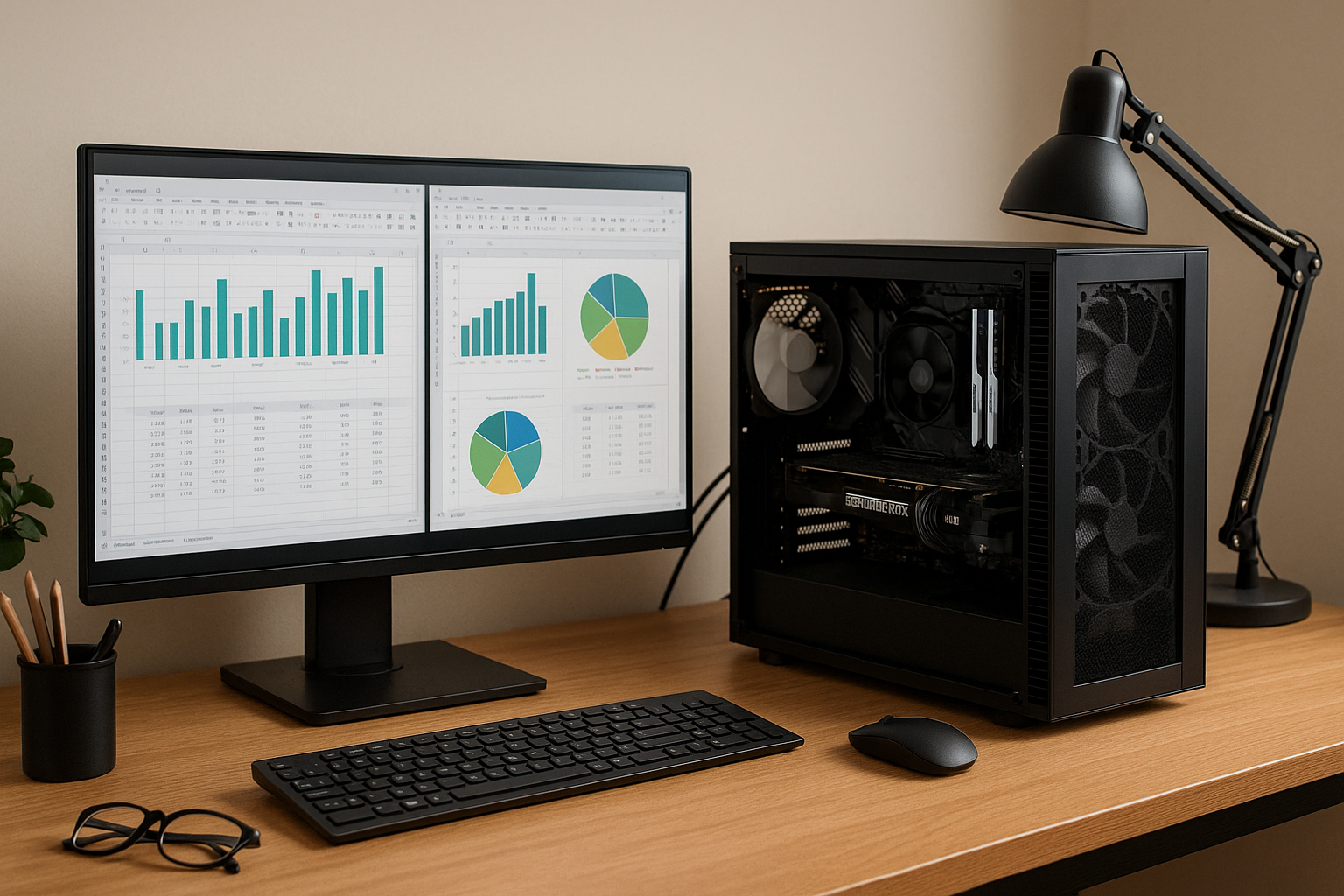Working from home has become a permanent fixture in many professionals’ lives, making a reliable and efficient home office setup more important than ever. Whether you’re attending Zoom meetings, managing spreadsheets, coding, editing content, or handling administrative tasks, having the right PC configuration tailored to your needs is essential.
In this guide, we’ll explore the best PC build configurations for a home office, ranging from budget-friendly setups to powerful multitasking machines. You’ll learn which components matter most, how to prioritize your investment, and how to build a system that supports productivity, stability, and comfort.
Why Build a PC for Home Office Instead of Buying One?
While pre-built PCs offer convenience, custom-building your own computer provides:
- Better performance per dollar
- Customization to specific needs (e.g., quiet operation, specific software)
- Upgradability for the future
- Higher build quality and component choice
If you’re spending long hours at your desk, a machine that fits your work style makes a major difference in comfort and efficiency.
Key Considerations Before You Build
Before diving into hardware, you should determine:
- Primary tasks: Are you just emailing and browsing or also editing video or running databases?
- Preferred OS: Windows, Linux, or Mac alternatives (e.g., Hackintosh builds)?
- Desk space and noise tolerance
- Budget
We’ll address three tiers of home office PC builds: Entry-Level, Mid-Range, and High-End.
Entry-Level Home Office PC Build (~$400–$600)
Ideal for: Word processing, spreadsheets, emails, web browsing, video calls, and light multitasking.
Suggested Components:
CPU: AMD Ryzen 5 5600G (with integrated graphics)
Motherboard: B550M Micro ATX motherboard
RAM: 16GB DDR4 (2x8GB, 3200MHz)
Storage: 500GB NVMe SSD
Case: Compact Micro ATX case with decent airflow
Power Supply (PSU): 450W 80+ Bronze certified
Cooling: Stock cooler (included with CPU)
Operating System: Windows 11 or Ubuntu
Why It Works:
The Ryzen 5 5600G includes powerful integrated Vega graphics, removing the need for a discrete GPU. With 6 cores and 12 threads, it handles everyday tasks with ease. Pair it with 16GB of RAM and an SSD for quick boot times and smooth app launching.
Mid-Range Home Office PC Build (~$800–$1000)
Ideal for: Heavy multitasking, web development, light design work, virtual machines, and moderate workloads.
Suggested Components:
CPU: Intel Core i5-13400 or AMD Ryzen 7 5700X
Motherboard: B660 (Intel) or B550 (AMD) ATX motherboard
RAM: 32GB DDR4 (2x16GB, 3200MHz)
Storage: 1TB NVMe SSD + optional 2TB HDD for backups
GPU: Optional NVIDIA GTX 1650 (if you need dual monitor support or GPU acceleration)
Case: Mid-Tower with good airflow and cable management
PSU: 550–600W 80+ Bronze certified
Cooling: Aftermarket air cooler (quieter and better temps)
Why It Works:
With more cores and better thermal performance, this build excels in multi-tab environments, media-rich workflows, and basic creative tasks. 32GB RAM ensures that virtual meetings, browsers, spreadsheets, and databases run concurrently without lag.
High-End Home Office PC Build (~$1300+)
Ideal for: Video editing, 3D rendering, software development, heavy multitasking, data analysis, and professional use cases.
Suggested Components:
CPU: Intel Core i7-14700K or AMD Ryzen 9 7900X
Motherboard: Z790 or X670 ATX motherboard with Wi-Fi and Bluetooth
RAM: 64GB DDR5 (2x32GB, 5200MHz or higher)
Storage: 1TB Gen4 NVMe SSD (for OS and apps) + 2TB SSD or HDD (for storage)
GPU: NVIDIA RTX 4060 or higher (if you’re editing videos, using CUDA, or need AI features)
Case: Quiet full-tower case with premium airflow
PSU: 750W 80+ Gold certified
Cooling: All-in-One (AIO) Liquid Cooler or high-end air cooler
Extras: UPS battery backup, dual monitors, ergonomic keyboard/mouse, webcam, and noise-canceling headset
Why It Works:
This configuration ensures that even the most demanding applications run without stutter or bottlenecks. It supports multiple 4K displays, fast file transfers, and intensive processing tasks — all in a quiet and efficient machine built for professional performance.
What About Peripherals?
No home office setup is complete without the right accessories. Here’s what you should consider:
Monitors
- Dual 24″–27″ monitors improve multitasking.
- Prioritize IPS panels for better color and viewing angles.
- Higher refresh rates (75Hz–144Hz) improve responsiveness.
Keyboard and Mouse
- Ergonomic options are essential if you type all day.
- Wireless keyboards and mice help with cable management.
Webcam and Microphone
- A 1080p webcam with autofocus is ideal for video calls.
- Consider an external mic or headset for improved audio quality.
Surge Protector or UPS
Protect your investment from power outages with a battery backup unit or at minimum a surge protector.
Software to Install on Your Home Office PC
Once your build is complete, don’t forget to install essential software, including:
- Office Suite (e.g., Microsoft 365 or LibreOffice)
- Chrome or Firefox browser
- Zoom / Microsoft Teams / Google Meet
- Antivirus or endpoint protection
- Cloud storage tools (Google Drive, Dropbox, OneDrive)
- Backup software like Macrium Reflect or Acronis
Tips for a Quiet, Productive Home Office PC
- Use low-noise fans or fan controllers to reduce distractions.
- Opt for SSDs over mechanical drives to eliminate hard drive noise.
- Choose cases with sound dampening foam if silence is a priority.
- Place the PC under your desk to minimize its presence.
Future-Proofing Your Build
Your work needs may grow. Build a system that allows:
- RAM expansion (ensure at least 4 DIMM slots)
- Storage upgrades (multiple M.2 and SATA ports)
- Support for new GPUs (future PCIe standards)
Choosing a reliable PSU and quality motherboard now will pay off later.
Final Thoughts: Build Smart, Work Smarter
Building the right PC for your home office means understanding your workflow and investing in the features that enhance your daily productivity. Whether you’re on a tight budget or building a powerhouse workstation, there’s a configuration that fits your needs without unnecessary expenses.
Remember, comfort and speed are key. The right components not only improve performance — they make your home office a place where you can stay focused and motivated.
Stay tuned — a visual representation of this article is coming next!

